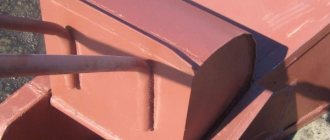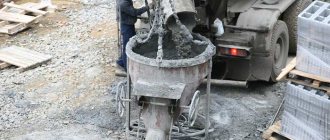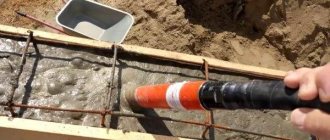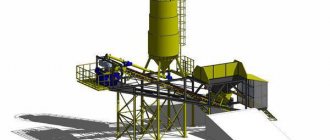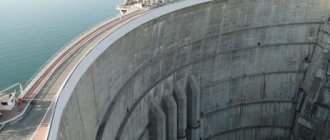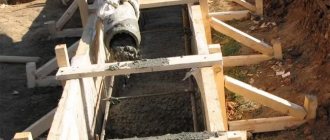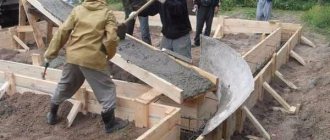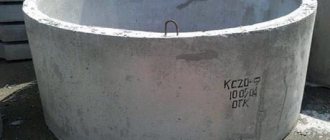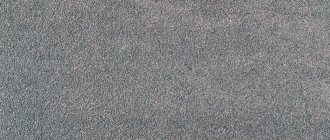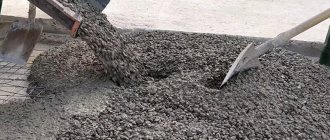No construction site can do without concrete or mortar mixture. Even when using wood as the main material, creating a foundation requires the use of artificial stone, which ensures the durability and reliability of the entire structure.
In addition to the task of transporting the required amount of concrete or mortar mixture, the question arises of unloading it and delivering it directly to the place of use. A concrete bucket helps solve this particular problem.
How does concrete get into formwork?
One of the most critical stages in the construction of monolithic reinforced concrete structures is the delivery of concrete from the mortar-concrete unit to the place of its installation.
How concrete is delivered to the placement site Gone are the days when the concrete mixture was delivered to the construction site by dump trucks; now concrete is transported by domestic and imported concrete trucks of various capacities. Using this delivery method can significantly increase the life of concrete, since throughout the entire trip the mixing drum of the concrete truck rotates slowly (3 - 4 rpm), mixing the mixture, and almost fresh concrete arrives at the site. However, now the concrete mixture delivered to the construction site must be brought into place and poured into the formwork. Two main methods of supplying concrete are used here:• the traditional method: “crane-tub”, in which the concrete delivered to the construction site is poured into a rotating tub, laid in a horizontal position with the shutter closed. A construction crane turns the filled tub into a vertical position, lifts it and carries it to the place where it is poured into the formwork, where the shutter is opened and concrete is poured into the formwork;• a relatively new method of laying concrete using a concrete pump. In this case, the concrete mixture from a concrete truck is poured into the receiving hopper of a mobile (trailer) or truck-mounted concrete pump, which delivers the mixture directly into the formwork through concrete pipes. The power of modern concrete pumps allows the mixture to be supplied to a height of up to 100 m and a distance of up to 300 m. Both of these methods are used on domestic construction sites with equal success, and each of them has its own characteristics and, accordingly, areas of application.
Concrete pumps are high-performance modern equipment for laying concrete. Of course, the use of concrete pumps significantly reduces labor costs during concrete work, but its high productivity (up to 80 m³/hour) makes the use of such equipment economically justified only for significant volumes of concreting. At the same time, a situation may arise when it is necessary to concrete a structure to which the existing crane cannot supply concrete and it is necessary to either rent a crane with a long boom, which has a high lifting capacity with a large reach, in order to supply a bucket of concrete to this place, or use a concrete pump. In such a situation, a truck-mounted concrete pump can be used, which, thanks to a boom reaching a length of 60 m, can in a short time concrete a structure that is inaccessible to a construction crane of medium lifting capacity. For concreting large-area floors, mechanical or hydraulic mobile concrete dispensing booms are used, allowing the mixture to be supplied within a radius of 12 to 40 m from the boom installation point. At the same time, the use of concrete pumps has its own characteristics, in particular, the pumped concrete mixture should not contain aggregates with a fraction larger than 40 mm, in addition, the concrete must have a certain plasticity (cone slump) and it must be supplied continuously, otherwise the concrete pipes must be regularly cleaned of the mixture remaining on their walls. Despite these features, the use of concrete pumps significantly speeds up the process of laying concrete and allows concreting structures of significant volume in a limited time.
Which method should you choose? However, the “crane-tub” method, due to its simplicity and efficiency, is still successfully used on many construction sites, where the bulk of the construction is made up of structures with a relatively small volume, in particular multi-storey and individual residential buildings. For industrial construction or the construction of unique public centers or shopping complexes, it most often turns out to be economically justified to use a concrete pump. In any case, the method of supplying concrete, as well as the equipment and equipment necessary for this, must be selected at the stage of developing a concrete work project, taking into account economic and technological factors.
xn—-ptbbjegddbnkmk.xn--p1ai
Types of containers for supplying concrete, their design and features
The scale of modern construction, both in terms of volume and height of objects, using reinforced concrete structures erected on site, requires the delivery of concrete in huge quantities to the pouring sites. It is this task that is performed by buckets (concrete mass bunkers - BBM) for concrete. With their help, the concrete mixture is delivered from the loading point to the places where formwork is poured, concrete floors or monolithic frame columns are formed. The bucket for supplying concrete can be placed in any place convenient for construction work. In addition, this device is used for short-term storage of concrete.
When producing concrete buckets, the following functional characteristics must be provided: - strength and anti-corrosion properties of the materials from which they are made; — reliability of the design; — ergonomics of the device, ensuring ease of loading, unloading and transportation; — sufficient volume; — additional devices in the form of electric vibrators that ensure complete unloading of material from the hopper and prevent subsidence of concrete.
The bunkers are made of high-strength steel, 2 mm thick, which has anti-corrosion properties. This material gives the product the necessary strength, allows it to be used in various weather conditions, and makes it resistant to mechanical damage. The latter are inevitable in construction conditions. Ultimately, the strength of steel guarantees the safety and long-term use of containers. The reliability of the bunkers is ensured by strengthening the upper part of the structure with channels and the presence of strong fastening loops.
Purpose and design of the “Shoe” concrete bucket
There are two forms of container design: rectangular and cone-shaped. The first form is a “Shoe” tub for concrete, the second is a “Glass”. The shape of the “shoe” is a rectangle turning into a cone and really resembles this type of shoe. The hopper is loaded in a horizontal position with the shutter closed and fixed, and transported and used in a vertical position. Hence its additional name - rotary bunker. The rotation is made using lifting mechanisms.
This device opens at the bottom of the cone using a lever system, which provides regulation of the dose of concrete solution. In addition, the locking mechanism has a lock that prevents spontaneous opening. A folding chute serves to guide the pouring; To deliver the concrete mixture to hard-to-reach places, a rubberized hose is connected.
The handle for opening the hopper is offset and this allows you to visually control the concreting process. The design is stable in any position. If necessary, an electric vibration motor is installed on the “shoe”, in the area of the cone. Then the tub can be used for transporting rigid concrete and dry mixes. The advantage of this design is that the loading height in a horizontal position is low and it is possible to load concrete mortar from any type of concrete mixer.
Features of the device
Such devices are used to supply concrete to the formwork or mortar to the masonry site in small portions. Their design, volume and weight may vary.
Varieties
Concrete buckets are available in two types:
- A glass that is shaped like a truncated cone with an additional cylindrical top.
- A shoe, which is a rectangular tray with a transition into a truncated prismatic pyramid.
Both options involve the use of unloading equipment. Most often, concrete buckets are produced in small volumes: from 0.5 to 3 m3, so they can be moved using any mobile crane or manipulator.
Application area
Such devices help to carry out the following types of work:
- unloading the mixture from any type of transport, including a concrete mixer truck;
- filling hard-to-reach areas of the structure;
- ensuring the supply of the mixture when access is difficult.
Of course, there remains the option of manually unloading the mixture and pouring it into those parts of the formwork that cannot be directly supplied from transport. But at the same time, the workload on workers increases, which increases unloading time and increases the cost of delivering materials, as well as carrying out all work. It turns out that a concrete bucket helps to further reduce costs during the construction of a structure.
On average, the volume of such devices is at least 1 m3, so if unexpected difficulties arise and it is impossible to accept the mixture, the container can be used as a temporary storage bin.
Manufacturing
The process of preparing the mortar is a labor-intensive construction operation. That is why the trough for preparing the batch should be highly durable and easy to use.
Let's consider one of the possible design options. For manufacturing you will need the following materials:
a metal sheet. It is advisable to use sheet steel measuring 1000x2000 mm, with a thickness of at least 1 mm, and having a zinc coating. The dimensions of the steel sheet may vary. The main thing is that the volume of the container corresponds to the assigned tasks;
Making a container for preparing a solution from sheet metal
- coniferous wood in the form of boards with a thickness of 30 to 50 millimeters. Prepare one board about 6 meters long, which will allow you to make a trough with dimensions of 1x2 m;
- nails for making a wooden frame or self-tapping screws for fixing steel sheets to boards.
When making a trough for concrete with your own hands, perform the work in the following sequence:
- Cut a solid six-meter board into 4 pieces: two pieces 2 meters long and two 1 meter long.
- Round the edges along the radius on two-meter workpieces, sawing off the corner fragments.
- Nail galvanized steel sheet to the straight parts of the prepared planks using nails.
- Bend the edges of the sheet at the level of the radius part and, using self-tapping screws, fix the meter-long boards.
- Additionally, secure the structural elements with self-tapping screws, which will increase the service life and ensure tightness.
Considering the small overall dimensions and weight, transporting such a container for concrete is not difficult. The radius shape of the sheet at the ends makes it easier to remove the finished solution and clean it. The tightness of the structure is achieved after the initial mixing, when the cement mortar seals small cracks. After the concrete mass hardens, water will not be able to flow out.
After the first batch, the trough will become almost airtight due to the filling of the cracks with concrete mortar
This design option is simple and allows the use of available building materials. Such a trough is a completely complete device for preparing concrete.
Making your own tub
If desired, you can make such containers for supplying mixtures with your own hands. The easiest to make are concrete buckets in the shape of a shot glass. For production you will only need rolled products of sufficient thickness and quality, guides, a welding machine and any cutting tool.
Preparation of the drawing
When making it yourself and using it at home, it is better to choose a small container volume, about 0.5 m3. That is why there is no need to make the upper cylindrical part of the body, which increases the loading speed of the tub.
A truncated cone, in fact, when the figure is opened, represents a regular prism, at the base of which lie the upper and lower diameters. By calculating the parameters of the cone for a given volume, you can obtain the characteristics of the prism. The resulting part must be transferred to rolled metal.
Cutting the workpiece and welding the structure
When making a tub with your own hands, you need to remember that the metal for the container must withstand the aggressive effects of the building mixture and constant moisture. Therefore, you should choose stainless steel rolled products.
After transferring the drawing to the material, the resulting workpiece is cut out and welded. An ordinary grinder can handle cutting metal, but welding is best done at high temperatures or choose rolled products that lend themselves well to regular welding.
Frame making
The resulting container must be placed in a frame that will strengthen the entire structure. To create it, you can use reinforcement with a rod diameter of 10 or 12 mm. A cube is brewed with bases in the form of squares, the side of which is equal to the upper diameter of the container. The length of the guides corresponds to the height of the tub. In the lower plane of the cube, a square is made, the sides of which are equal to the lower diameter of the cone.
To strengthen the container, guides are welded from the corners of the upper base to the corners of the lower small square on which the cone will rest. After all the elements have been manufactured, the container is welded to the frame, and additional hinges are made for working with the tap.
All construction sites cannot do without concrete mortar. Even wooden buildings require the use of artificial stone when creating a foundation to ensure the reliability and durability of the entire structure.
In addition to transporting the required amount of concrete mixture, it is necessary to unload and supply it to the place of use. A concrete bucket is used for these purposes. The article introduces the types of structures, their features and manufacturing methods.
Some features of the operation of construction devices
As noted above, it does not always make sense to purchase a bucket; sometimes it is much easier to rent one or even use the services of transporting concrete, since doing the work yourself will require too much effort.
This applies to many jobs, for example, cutting reinforced concrete with diamond wheels without special equipment will take too much time and money, and diamond drilling of holes in concrete is a completely impossible task without expensive devices. It is much easier to use the services of professionals who will carry out the work quickly and efficiently.
The paint must be periodically renewed, as the layer is severely damaged during use.
Criterias of choice
From the description it follows that the simplest, therefore the most inexpensive, but quite capacious design are all types of “Boxes”. At the same time, the most convenient (from the point of view of transportation, loading and unloading and the ability to move bulk materials) tub is considered to be a rotating “Shoe”. “Ryumka” is recommended to be used in combination with small-scale mechanization equipment: chutes, concrete pumps and feed hoses.
In general, it makes sense to have at the construction site: a “Shoe”, a “Glass” and several “Boxes” of various capacities and designs, depending on the scale of the construction and the volume of planned concrete work.
Features of the bucket for supplying concrete “Ryumka”
Another option for a bunker is a “shot glass” concrete bucket. It is also called: vertical round (VRK) or non-rotating tub - BN. The container is filled with concrete mixture and transported in a vertical position. It has a tray for directional supply of concrete. The jaw-type valve easily opens the outlet and closes it tightly using a lever. BN is used at sites where there are construction cranes.
The described design options are available in various types depending on the volume of the tub. It varies from 0.5 to 2.5 cubic meters. With an increase in the volume of the bunker, the load capacity increases from 2500 kg to 6000 kg and the dead weight of the product increases from 300 to 1600 kg. An important characteristic of a concrete bucket is the price of the product. It ranges from 20 to 35 thousand rubles, depending on the load-carrying capacity of the structures and the pricing policy of the companies producing these products.
Don’t forget about the possibility of purchasing equipment for rent. Rent of concrete buckets is usually offered by the companies that produce them. Sometimes this makes more sense than buying a bunker. If a device for a concrete mixture is needed for one-time use, then it will be more profitable to pay for its rental than to spend money on buying a tub as personal property.
In any case, a concrete bucket is a necessary element of construction equipment and equipment for the working sector of buildings. This product ensures the transportation of concrete mixtures to any place under construction, extends the time interval for their use, reduces losses of materials due to dosage, maintaining the mixture in working condition and complete unloading using electric vibrators. The choice of the desired bunker model depends on the scale of construction and the equipment of the construction site.
Advantages and disadvantages of designs
Each model has its own characteristics, pros and cons. Some fixed-type models use both vertical and horizontal methods of loading concrete. At the bottom of the hopper there is a tray, it is usually made in the shape of a cone. Despite the identical dimensions, the pyramidal container is higher, but it is more difficult to clean the inner surface of solution residues.
In small designs, the bottom tray is most often opened manually. Large containers use locking connections.
Rotary models are more expensive, but also more comfortable to use. When using a “shoe”, supplying the solution requires fixing the structure at the desired angle to the support, this makes the work easier. It is possible to adjust the speed of supply of the mixture from the container. This type of design is more versatile, with increased convenience provided by the large cross-sectional area for the funnel.
Among the disadvantages of the “shoe”, it is worth noting the possibility of loading concrete only in a horizontal plane using two methods - using a dump truck or special vehicles. Thus, the “bell/glass” design is simpler and cheaper, while the “shoe” design is functional and comfortable, but costs more. The first option is suitable for small volumes of work, the second is relevant when performing large-scale fills.
A bucket for supplying concrete is a convenient and functional device that greatly simplifies and speeds up the pouring of concrete at sites. Provided the correct choice and professional operation, the bunker will serve for a long time and faithfully.
Design features and purpose
A container for concrete is a special trough-shaped construction container in which the ingredients for preparing concrete are mixed. And if there are lifting devices, it is possible to supply the prepared concrete mixture to the mason’s place of work.
The design features are small overall dimensions, allowing for the preparation of concrete in the required quantities. Dimensions may vary and depend on the need for concrete composition. Basic dimensions are:
The use of a mixing trough is especially important if the entire volume of the solution from the concrete mixer has been used, and several buckets of concrete are required to complete the work.
A concrete container or tub is used to perform various tasks. With its help the following is carried out:
- Sealing joints in the foundation of a building.
- Plastering works.
- Carrying out masonry.
- Minor repairs.
- Construction of utility rooms with small overall dimensions.
- Installation of enclosing structures.
Mixing concrete in small quantities can be done by hand using a shovel, trough, dry cement mixture, gravel and water
Products for preparing concrete have a long service life, provided that the inner surface is cleaned of residual cement mortar, which must be removed before hardening. Shape and volume may vary. When thinking about the design of the trough, pay attention to the height of the sides, the small size of which makes it easier to mix concrete.
To carry out work on mixing the concrete composition, an unnecessary steel or cast iron bath can be used. But what to do if it is not at hand? You can make a trough yourself.
Criteria for choosing containers for concrete
To ensure optimal performance of construction work, compliance with technology, and ease of use of the container, a number of the following factors must be taken into account:
the dimensions must be suitable for carrying out all necessary manipulations in specific conditions; the capacity should be optimally compared with the scale of the concreting work, so as not to cause delays and to prevent idleness of the finished mixture; when choosing a shoe, you need to make sure that the required equipment can be used, the equipment is equipped, as well as the methods of attaching the sleeve or funnel; it is important that the lifting capacity is sufficient to ensure increased safety on the construction site, but taking into account the characteristics of the crane used; It is recommended to choose a branded manufacturer that guarantees high build quality, durability and reliability of the design (it is worth paying attention to Zitrek products).
Renting or buying?
- large amount of work;
- a tight or round-the-clock work schedule that does not allow downtime;
- it is necessary to make some changes to the scheme, for example, to strengthen the frame;
- are engaged in commercial activities and often perform work related to concreting: pouring sites or constructing multi-story monolithic buildings.
If you decide to buy a new tub, you will receive the following benefits:
- the design will fully meet the declared characteristics: absence of hidden or obvious defects, deformation of the container;
- it will be possible to maintain the ideal condition of the metal by ensuring gentle operating conditions and timely maintenance;
- loading the exact volume of solution, since there will be no dry concrete adhering to the walls.
Buying a used tub is an excellent alternative to purchasing a new one due to the following benefits:
- at the same price it will be possible to get larger container sizes;
- instead of a fixed shoe, choose the optimal shoe and improve work productivity;
- abandon Chinese equipment in favor of branded equipment, for example, Zitrek;
- operation at the maximum technical capabilities with minimal financial investments.
Used equipment that has been in use for a year has a cost that is 1.5-2 times lower than new equipment with similar characteristics. Therefore, from a financial point of view, it is the most profitable. The following risks are present:
- ideal external condition is the result of hiding critical defects, for example, rusted sheets or a supporting frame;
- inside steel structures, as a result of improper operating conditions, fatigue deformations have formed, which, under certain loads of the concrete mixture, partially or completely destroy the tub;
- There must be a technical passport.
In case of a limited budget or one-time concreting, renting is beneficial. Its cost depends on the service life of the equipment, its condition, design features and equipment. If there is a long distance to the construction site, then it is necessary to evaluate the possibility of purchasing, since sometimes transportation costs can make renting financially unprofitable.
Prices for new and used concrete buckets
| Type of service | Type | Volume | Load capacity, t | Dimensions, m | Price, rubles |
| Purchase (new) | Fixed with unloading tray and funnel clamp | 0,5 | 1,12 | 1.50x1.50x1.46 | 18900 |
| 1,5 | 3,75 | 1.52x1.52x2.00 | 29950 | ||
| Fixed with tray | 3 | 4,5 | 1.57x1.57x2.85 | 48800 | |
| Rotating with a platform for installing a vibrator | 1,6 | 4 | 3.60x1.60x0.89 | 36900 | |
| 2 | 5 | 3.70x2.10x1.14 | 45400 | ||
| Purchase (used) | Rotary | 0,5 | 1,12 | 3.1x1.27x0.7 | 15500 |
| 1,6 | 3,75 | 3.10x1.27x1.20 | 16000 | ||
| 2 | 4,00 | 3.60x1.27x1.34 | 19500 | ||
| Fixed | 0,5 | 1,25 | 1.25x1.25x1.27 | 10000 | |
| 0,75 | 1,88 | 1.25x1.25x1.68 | 14500 | ||
| 2 | 5 | 1.58x1.58x2.45 | from 19000 | ||
| Rent | Rotary | 1 | 2,5 | 3.17x1.27x0.72 | from 800 per day + 12000 deposit |
| 2 | 5 | 3.64x1.27x1.34 | |||
| Fixed | 0,5 | 1,5 | 1.25x1.25x1.27 | from 500 per day + 10,000 deposit | |
| 1 | 2,5 | 1.25x1.25x1.86 | |||
| 2 | 5 | 2.00x2.00x1.75 |
Ask your question
Price: RUB 52,490/piece
Price: RUB 47,390/piece
Price: RUB 64,900/piece
Price: RUB 55,900/piece
Price: RUB 71,900/piece
Price: RUB 72,590/piece
Stroymashservice-Techno LLC provides warranty repairs and service throughout the entire service life of construction equipment purchased from Stroymashservice-Msk LLC. And during the warranty period of equipment specified by the manufacturer and purchased from other companies. Technical is a warranty representative of the following factories:
- OJSC Lebedyansky Plant of Construction and Finishing Machines, Lebedyan
- LLC "Stroymash", Ryazan
- CJSC Tver Experimental Mechanical Plant, Tver
- OJSC "Bezhetsky city Bezhetsk
- CJSC Commercial St. Petersburg
- RenzA MACHINERY COMPANY
- General Purpose Engines LLC
- Atlas-Copco
- Splitstone
You can familiarize yourself with the procedure for submitting warranty repairs here.
In our catalog, concrete buckets are on sale at a low cost. Concrete buckets “Shoes” are ideal for use in various production conditions, are produced under strict quality control and meet high safety and production quality requirements.
Custom tab.
- Description
- Wheel selection
- Custom tab
- Documentation
- Video
- Reviews and questions (0)
In our catalog, concrete buckets are on sale at a low cost. “Shoes” concrete buckets are ideal for use in various production conditions, are produced under strict quality control and meet high safety and production quality requirements. Ordering “Shoes” concrete buckets on the Internet In the PEM store you can always get professional advice and select all the necessary equipment and related products.
A concrete bucket looks like a device for storing concrete mortar for a short time. It is used on construction sites and used together with special equipment. It greatly simplifies the work of pouring concrete, quickly supplying large and small volumes of mixtures, performing dosed unloading in the right place.
- loading hopper for supplying concrete;
- sleeve or tray;
- flap;
- mechanical shutter;
- control handles;
- clamps used only in rotating products;
- welded support frame in vertical type structures;
- mounting loops for transportation by tower or overhead crane.
Purpose and types of tubs.
Concrete composition is used on any construction site. For large volumes of construction, it is usually supplied using a special container. Its design must meet the required intensity of concreting, the complexity of installation and the shelf life of the prepared mixture. For this purpose, concrete buckets are produced, which differ in their characteristics.
Purpose and varieties
A tub may be needed when the volume of loading and unloading concrete is very large. When pouring monolithic foundations and other structures, the bunker makes it possible to significantly reduce the cost of delivering the finished mixture, eliminating the need for the services of a plant and providing the solution directly to the site. Ready concrete can be stored in the tub for some time.
Different models of buckets are suitable for implementing certain tasks, so before choosing, it is advisable to study the features of each option.
Glass or bell
This is a model of a fixed cylindrical tub with a cone. The bunker carries out vertical supply of concrete. The stability of the structure is achieved thanks to the presence of a support system in the format of wide rings. The rings are different, the configuration is different in the case of a filled and empty container.
The concrete solution is loaded into the bucket through the top from a dump truck. It's easiest to work with lowered models. The standard configuration assumes the presence of jaw-type locking connections, which are located in the lower part of the cone. Also, to simplify the supply of the solution, mechanisms are used: a trailed tray, a funnel, and fasteners for flexible hoses.
The “bell” model is used to load concrete mortar into similar/monolithic building structures. This type of tub is useful when working with very hard mixtures. Additional functionality is provided by replaceable trays and special hoses, without which concrete supply is only possible in one direction.
“Ryumka” is the simplest and most inexpensive version of a tub, the capacity varies in the range of 0.5-3 cubic meters (more can be found in Moscow, but rarely), the average carrying capacity is 2500 kilograms.
Tub in the shape of a shoe
This model is made with a rotating structure, the geometry of which can change. The capacity is 1-4 cubic meters, the hole for receiving concrete is rectangular, the mixture is unloaded horizontally, which guarantees comfort in operation and stability of the tub.
Externally, the model looks like a tapering and slightly truncated pyramid. The unloading funnel is closed with a special shutter, the body is reinforced with metal parts. The special frame provides additional protection and stability.
The main feature of the “shoe” model is the presence of a vibrator on either side of the tub, which significantly extends the life of the solution and allows it to be stored for a short time. The mixture becomes more homogeneous and active, and is easier to serve.
Cranes are used to move the tub and rotate it into a vertical plane. Thanks to the rotating type of design, the task is greatly simplified. This is a more functional model compared to the previous one. An important advantage is the connection of a vibrator, which does not allow concrete to linger on the walls of the container.
Discharge funnels in “shoe” type models can be very different – from slide to two-section. A system of levers initiates control. Using a bucket, concrete can be prepared directly on site.
Cone-shaped container design
A shot glass-shaped concrete bucket is a universal device for working with a mixture of any mobility. Builders often call this device a “bell.”
The tub is positioned only vertically and is not intended for tilting or turning (type BN), therefore the outlet funnel of the container is often equipped with special trays or a sleeve to facilitate the supply of concrete or mortar mixture.
Frame
The body of the container in the form of a glass is a receiving cylindrical hopper, turning into a truncated cone. The narrowed lower part creates a funnel effect, which greatly facilitates the passage of concrete or mortar mixture under its own weight.
The cylindrical part is usually reinforced with special channels encircling it in the upper and lower parts. Thanks to these elements, the concrete tub perfectly tolerates the loading of slow-moving mixtures that exert great pressure on the walls of the container. It is to the channels that the metal loops for working with the crane are attached.
Support
The support of the container is made in the form of a circle, due to which the tub of the glass is highly stable on any surface. The tray is made in the form of a round gutter, the fastening of which is carried out at an angle. The tilt ensures that the container is unloaded when the mixture moves independently under the influence of gravity.
Volume and price
Most often, such a tub is made with a volume of 1 – 3 m3. The cost of the device on average ranges from 15 to 65 thousand rubles, so in low-rise construction it is best to rent a tub, which will cost 500 - 800 rubles per day.
Criteria for selecting buckets for supplying concrete
When purchasing a new product, pay attention to the following:
- For the desired capacity of the bunker: for buckets of the BN series it starts from 0.5 m3, for buckets of the BP series – from 1 m3. Volume gradation – every 0.2 m3.
- For the thickness of the metal of the bunker: rolled thin sheets will significantly reduce the service life of the product, taking into account the fairly high density of concrete mixtures and the operating conditions of the products at the construction site.
- On the quality of painting of all surfaces: the use of weather-resistant powder paints not only ensures the tightness of the coating in any atmospheric conditions (at least for a year), but also guarantees the durability of the equipment.
- For the presence of additional options in the design of the tub. In particular, the presence of a platform for installing a vibrator (for products such as a bell and a shoe) will speed up the process of unloading concrete and will reduce the complexity of subsequent cleaning of the internal surface of the bunker. For non-rotary versions, the convenience of unloading is also determined by the type of mechanism for opening the shutter jaws.
- Shape of transport eyes. It should be convenient for use when transporting the tub not only with cranes, but also with forklifts.
For periodic concrete work, buckets for pouring concrete are usually not purchased, but rented. The rented container must not have dents on the inner surface of the bunker, damage to the coating or defects in transport loops.
Container from a barrel
If the considered design option made of boards and steel sheets does not seem strong enough for kneading, you can make a steel version of the tank entirely from metal. A special feature of the design is the semicircular shape of the container, the base of which is a metal barrel of fuel and lubricants with a volume of 200 liters.
When searching for a barrel, pay attention to the thickness of the metal, which should be at least one and a half millimeters. Using a thick-walled barrel will extend the life of the tank even with intensive use. A thin-walled tin barrel will not be able to be fully used even for one season.
There is an alternative option. If it is difficult to find or buy a barrel made of thick material, you can make a trough yourself using sheet metal, bending it to the required radius.
This tub will serve you for many years, even if you use it every day
For manufacturing you will need the following materials:
- pipe, the diameter of which is from 1/2 to 3/4 inches. Two pieces of this pipe will be needed for the manufacture of horizontal jumpers located on the end part of the sections of the container made from a barrel;
- steel reinforcement for four supports with a diameter of more than 16 millimeters, the length of which is 0.4-0.5 m. You can use 4 corners with shelves 3.5 cm wide for the legs;
- reinforcement rods in the amount of 4 pieces, 0.4-0.6 m long, 10 mm in diameter for the manufacture of spacers that fix the supports;
- thrust bearings made of thick steel of any shape for the manufacture of supports for racks that make it difficult to sink the container into the ground along with concrete;
- thick-walled steel barrel with a volume of 200 liters.
Make a trough from a steel barrel, observing the sequence of work stages:
- Inspect the barrel and cut it lengthwise so that there is a weld seam at a distance of 5-10 cm from the edge of the cut and the filler neck does not fall into the cut. This will prevent metal from getting into the overlapping layer and reduce the labor intensity of the work.
- Cut off the strip of steel located in the second layer.
- Remove uneven surfaces and sand the surface using a grinder or sander.
- Weld along the ends of the cut portion of the 1/2- or 3/4-inch pipe, ensuring they are positioned on the outside of the trough.
- Attach, using welding, the support legs, spacers, and thrust bearings.
- Remove burrs and grind weld seams.
These are the simple steps of making a container for preparing concrete. The volume of the trough, made from a barrel, allows you to conveniently prepare a batch with a volume of about 5 standard buckets. It is convenient to remove concrete mortar from a semicircular trough. By cutting one 200 liter barrel, you can make two tanks, which will not be superfluous when performing construction work.
Review of the most popular options and their advantages and disadvantages
As noted above, there are mainly two types of structures used, and you need to decide which one is suitable for a particular construction project
They differ in many characteristics, and it is important to choose the best option
Shot glass design
A bucket glass for concrete is one of the simplest types of products, which provides invaluable assistance in the process of work. But you need to understand that products of this type may differ from each other, and choosing a specific option can be difficult, even if you do not buy, but rent the device. After all, productivity and ease of use depend on the right decision.
It was the appearance that determined the name of the glass (some call this type a bell)
Let's consider what criteria you should pay special attention to, whether purchasing new equipment or used units:
The material used to make the product, most often steel, must be very durable. Insufficient thickness does not provide the required reliability
If you choose a used tub, then pay attention to the absence of damage; sometimes eliminating them will cost more than the product itself.
Also check other elements - each unit must be strong and reliable.
If you need a device with a capacity of 1 m3, you should not purchase an option twice as large: it is much heavier, and it will be inconvenient to work with.
A bucket for supplying concrete of this type consists of several main parts:
- The main container, made either simply in the shape of a cone, or as a cone with a cylinder on top. The features of this system depend on the required capacity.
- The support system is also of great importance; it can be of a wide variety of configurations. The main requirement for it is the strength and stability of both empty and full containers.
- A very important part of the design is the shutter with a handle with which the solution is unloaded; the shutter must be durable and the opening handle comfortable. (See also the article Cladding aerated concrete: how to do it.)
A comfortable valve handle is an important part of the design
Eyelets for attaching the structure to the crane and lifting it are very important, since the safety of everyone on the construction site directly depends on it.
Shoe type design
This is a more progressive option, but its price is noticeably higher; the requirements for strength and quality of materials for such structures are similar to those discussed above. (See also the article Concrete crushed stone: features.)
Instructions for checking the product yourself are as follows:
- First, all structural elements are carefully inspected for reliability and absence of damage.
- If the unit is used, then look inside the bunker: if it has not been cleaned, then a layer of hardened concrete can create a lot of problems for you.
Due to its external features, this type of design is called a shoe or galosh
This option has a number of advantages:
- The design of the product is rotary, which allows you to adjust the direction of unloading concrete and increases the ease of use of the bucket. It is this advantage that determines the popularity of this type of product.
- The structure may have a platform for installing a vibrator, which significantly speeds up the unloading process and prevents concrete from sticking to the walls.
- Another undoubted advantage is the ability to load the solution both from a mixer and from a dump truck; this can simplify the work and reduce the cost, since special transport is much more expensive than conventional trucks.
- Despite the large capacity and reliability of the products, their unloaded weight is relatively small, which increases ease of transportation.
- Loading such containers is much easier, since this is done with the tub in a horizontal position (transportation is carried out in a vertical position).
Convenience of loading the container is another important advantage
Design and principle of operation of the tub
The design includes:
- Pos. 1 – tank in the form of a cone;
- Pos. 2 – gate;
- Pos. 3 – control handle;
- Pos. 4 and 5 – elements for fixing the gutter;
- Pos. 6 – trench for supplying solution;
- Pos. 7 – funnel;
- Pos. 8 – loop for transportation;
- Pos. 9 – visor.
Most often, the container is made in the shape of a truncated cone, which is connected to a cylindrical shell. The gate serves to regulate the supply of the mixture using a handle with a lever mechanism.
When transporting equipment, the chute is fixed with a lock, pos. 4, and when pouring the mixture through the chute with a retainer, pos. 5. Through the chute pos. 6 ensures the direction of the solution flow. Funnel pos. 7 with a flange prevents splashing of the composition when mixing and when unloading the mixture.
Tip: To unload the construction mixture into a hard-to-reach place, put a rubberized sleeve on the flange.
The container shown in the photo is distinguished by the design of the housing, which conventionally consists of three parts:
- Rectangular receiver for concrete or mortar mixture;
- A bunker shaped like a truncated pyramid;
- A two-section valve, with the help of which the angle and intensity of the supply of concrete solution is adjusted.
The concrete receptacle and shoe hopper are usually made of rolled metal. To strengthen the body of the device, a longitudinal frame is additionally constructed from channels, which prevents deformation of the tub when it is fully loaded.
Hinges for transporting or unloading containers using lifting equipment are attached to channels reinforcing the structure. Special elements are additionally attached to the reinforcing frame, which ensure that the container is tilted at the required angle when unloading the solution or concreting the area.
The shoe has a special shutter, both doors of which have their own handles for control. This design allows for adjustment of the mixture supply. Special safety rings on the handles protect the tub from accidental opening of the shutter.
Tip: Due to the design, the mixture may not be completely discharged without additional impact. Therefore, a shoe-shaped product should be equipped with a mounted vibrator.
When transporting equipment, the lifting mechanism is attached to the tub using transport loops. To transport dry mixtures and hard concrete, a mechanical vibrating bucket is used. The container in this case is supplied with an electric motor mounted on a conical tank.
In addition, the container may have a technological platform intended for the operator and delivery of technological equipment to the concreting area for lifting the bunker with concrete. The cone hopper can only be used in a vertical position. And its volume can be v=0.75; v=0.8 cubic meters

